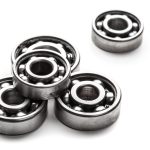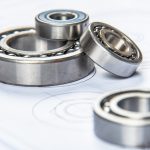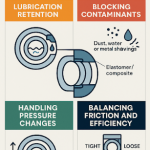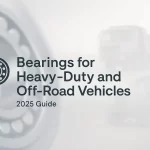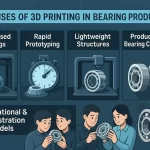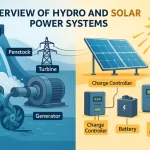The EV (electric vehicle) industry is on the rise, both globally and specifically in India. The rising popularity can be linked to economic, environmental, and technological factors. These vehicles use electric motors instead of traditional internal combustion engines. According to a report by Statista, the revenue of the electric vehicle market is projected to reach US$784.2bn worldwide in 2025.
India is poised to become the world’s largest EV market by 2030. Additionally, metropolitan cities in India are integrating electric buses into public transport systems as a push towards clean mobility. Brands like Ather, Ola, Revolt, TVS, Hero, Bajaj, and more are leading the charge in the two-wheeler EV segment in India.
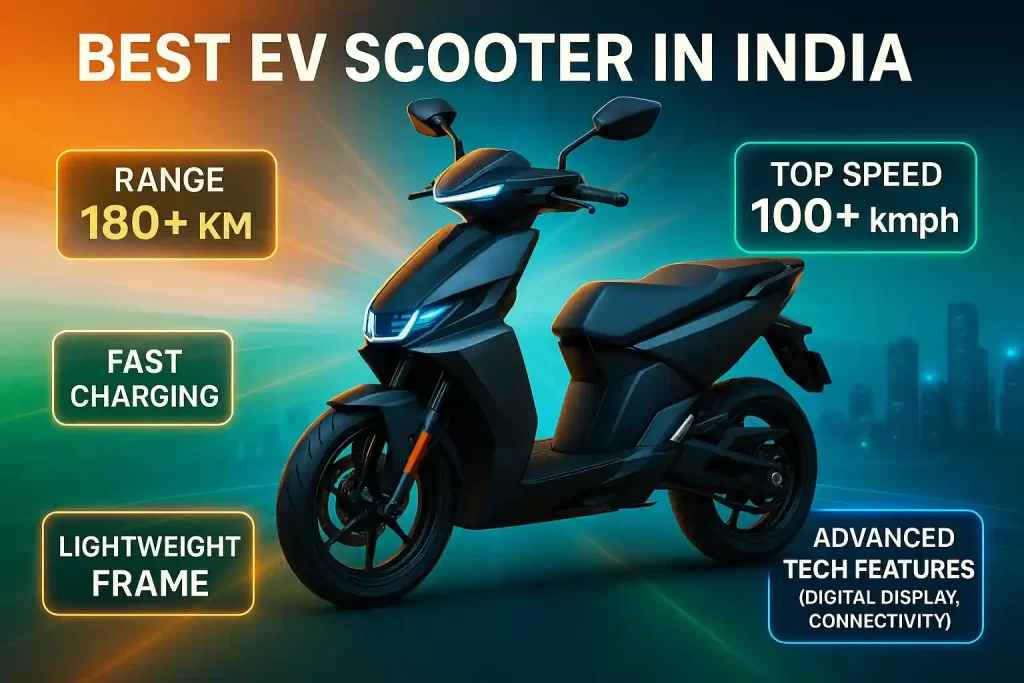
This greater adoption of two-wheeler EVs is increasing the demand for various components of these vehicles, including lithium-ion batteries, charging infrastructure, thermal management components, bearings, and more. And just like traditional two-wheelers, EV two-wheelers also rely heavily on high-quality bearings in the wheel hubs and motor systems. Various types of bearings are used in two-wheeler EVs, including ball bearings (deep groove ball bearings), roller bearings (cylindrical roller bearings), etc.
Why is India Shifting to Electric Two-Wheelers?
India’s shift towards electric two-wheelers is rapidly expanding, and the adoption can be linked to increased government incentives, rising fuel prices, and increased awareness about cost savings with EVs. Additionally, India is also focusing on local manufacturing of EVs to reduce dependence on imports.
Government Incentives
The Indian government offers subsidies to promote the adoption of electric two-wheelers through various schemes. Some of the schemes include:
- FAME II – Central level scheme concluded in 2024, significantly reduces the upfront cost of electric two-wheeler with an initial subsidy of ₹10,000 per kWh, later increased to ₹15,000 per kWh.
- State Subsidy: In addition to the central level scheme, state-level subsidies are also being offered to promote adoption. Different states have their own subsidy, Eg, some states offer exemption from road tax, registration fees, and more.
Rising Fuel Prices and Cost Savings with EVs
Another significant factor contributing to greater adoption of EVs is rising fuel prices. India has been experiencing continuous hikes in fuel prices over the last 10-15 years, while EVs have gained attention for their low running costs. Additionally, the rising awareness about environmental impact and savings continues to push EV adoption.
|
Feature |
Petrol Two Wheeler |
Electric Two Wheeler |
|
Average mileage |
45 – 60 km/ litre |
80 – 120 km/ charge |
|
Fuel cost per litre/unit |
Approx ₹100/ litre |
Approx ₹6/unit |
|
Running cost/km |
₹1.8 – 2.2/km |
₹0.5 – 0.6/km |
Top EV Scooters in India (2025 List)
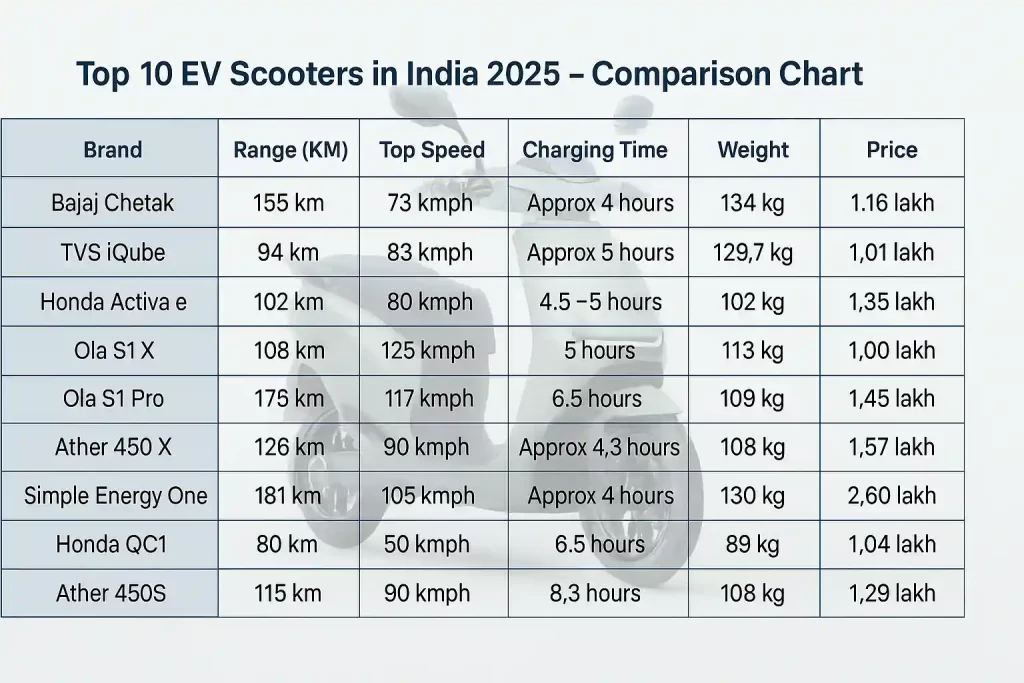
In India, EVs are spanning across several key segments like two-wheelers, four-wheelers, three-wheelers, electric buses, to commercial vehicles. While the two-wheeler segment is dominated by various global and local players, including Ola Electric, Ather, TVS, Bajaj, Hero Electric, and more.
For generations, scooters were the mode of transportation for Indian families – dependable, simple to ride, and ideal for urban roads. From the Bajaj Chetak of the 80s to Activa’s revolution, scooters dominated Indian roads. Now, in a turn of fate, scooters are getting their limelight back – but with a fresh, green face.
What to Consider Before Buying an EV Scooter?
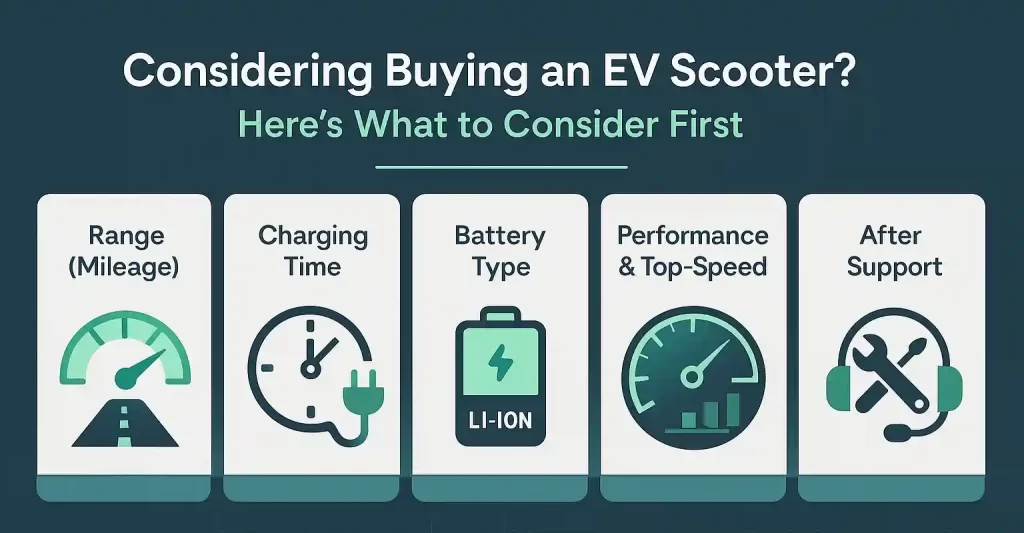
- Range (Mileage): The primary factor to consider is determining the range, calculating the distance you travel every day, and opting for a scooter that offers 20 – 30% more range than your regular travel needs.
- Charging Time: The Charging time of EV scooters varies; some of the models offer fast charging options, which take 1 – 2 hours for a full charge, while standard charging models take around 4 – 6 hours to charge completely. Choose the variant that suits your schedule. Also, ensure there is a charging setup at home & work.
- Battery Type: EV scooters commonly come with lithium-ion batteries, which are either removable or fixed. Consider your charging infrastructure at home & the office. Fixed batteries require a charging point at the parking slot, while removable batteries can be removed and charged at home.
- Performance & Top-Speed: Consider the riding condition and type of riding. Riding on highways may require a faster engine & high torque, while scooter variants, low on top speed and torque, may be ideal for commuting on local roads or nearby locations.
- After Sales Support: Selecting brands with a good or high-rated service network is important. In case of any issues or assistance, a brand with an expansive service network can help with mobile servicing options, easy availability of spare parts, and more.
Other factors to consider include smart features, battery warranty, build quality, safety features, and battery type & capacity.
Government Incentives & Subsidies in India
The Indian government is promoting electric mobility to accelerate the adoption of EVs due to several reasons.
- EVs produce zero tailpipe emissions, contributing to lower pollution levels.
- Switching to EVs will reduce the reliance on fossil fuels.
- Adopting EVs can lead to the transition of a more sustainable & environmentally friendly transportation sector.
Bearings & Their Role in EV Scooters
Bearings – the indispensable part of various mechanical & industrial units, also play a key role in EV scooters. Bearings in EVs are precisely designed to be smooth in operation. Unlike combustion engine scooters, EVs are quieter, deliver instant torque, and operate at higher RPMs, necessitating the need for specifically designed bearings. Various types of bearings are used in EV scooters to support smooth and efficient operation and absorb radial forces.
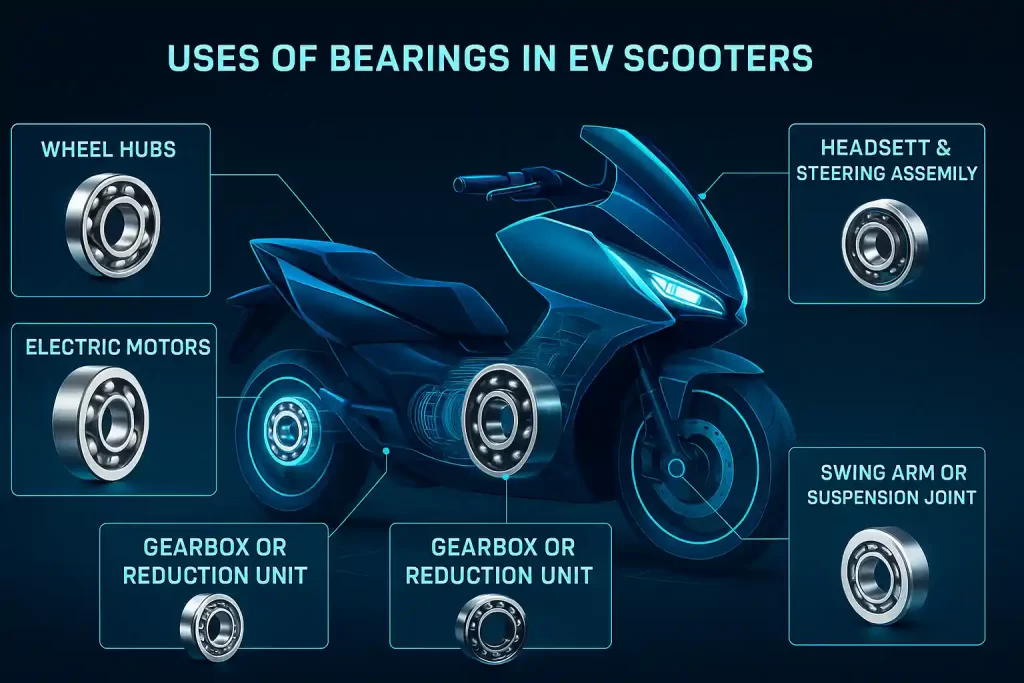
Uses of Bearings in EV Scooters
- Wheel Hubs
- Electric Motors
- Gearbox or Reduction Unit
- Swing Arm or Suspension Joint
- Headset & Steering Assembly
Types of Bearings Used in EV Scooter
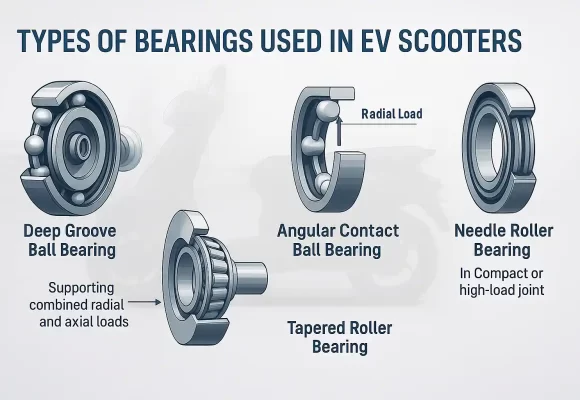
Deep Groove Ball Bearing: A Deep groove ball bearing is most commonly used in EV scooters. These bearings are known to support radial loads, handling high speeds with minimal noise. Deep groove ball bearings are used in motor shafts, wheel hubs, gear reduction units, etc.
Angular Contact Ball Bearing: Angular contact ball bearings are fitted in EV scooters to handle both radial and axial loads. This type of bearing is used in transmission systems and powertrains.
Hybrid Ceramic Bearing: Hybrid ceramic bearings are also widely preferred for EV scooters as they offer several advantages, like lightweight, better electric insulation, and resistance to high speed. This type of bearing is used in premium EV scooters or high-performance focused models.
Sealed Bearings: Sealed bearings are also preferred for EV scooters, usually fitted in wheel hubs & other external-facing parts. These bearings reduce the maintenance needs and extend life.
Tapered Roller Bearing: Tapered roller bearings are equipped in the steering column and rear wheel assembly. Tapered bearings are used given their heavy radial and axial loads support.
Needle Roller Bearing: This type of bearing is slim & compact and is used in gear shafts, electric motor, and suspension joints. Needle roller bearing is used where space is limited.
Future Trends in Electric Scooters
The demand for electric scooters is already booming in India, the reason behind can be cited to affordability, ease of use, and increased awareness about climate change. According to NITI Aayog, there will be 30% EV penetration in private vehicles by 2030. The future for electric scooters and other EVs are known to rapidly increase given the awareness about environmental concerns, lower operating costs, and government support. Additionally, India is focusing on local battery manufacturing, reducing the reliance on imports and widespread development of charging infrastructures to support the rising demands.
Conclusion
Electric scooters are being widely adopted by Indians, though there is an obvious debate around EVs being expensive, but the same can be defended given their low running costs. Additionally, considering the rapidly increasing adoption rate, even commercial electric vehicles are widely being manufactured by global & Indian manufacturers. The developed and developing countries are focusing more & more on clean & sustainable sources of energy, given awareness about climate change and reduced reliance on fossil fuels. This growth is also directly linked to an increase in demand for a variety of precise bearings, which can further cater to the increasing demand for a variety of electric vehicles.
If you are considering buying an electric scooter, calculate the distance you travel everyday and determine if the scooter meets your needs, consider the charging speed, warranty on the battery, check if public charging stations are available nearby, understand the maintenance cost, and more to choose the best electric scooter for your everyday commute.



